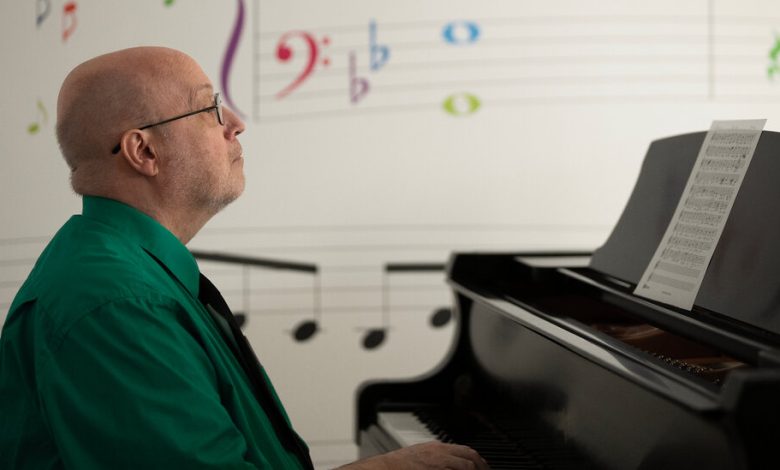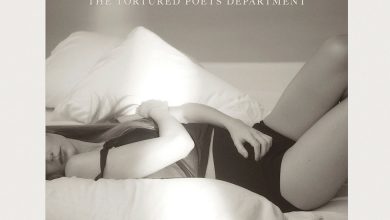‘Make Noise Enough’: Excavating Shakespeare’s Songs

Musicians from the early-music ensemble Collectio Musicorum were practicing a 17th-century round on a recent afternoon in Manhattan. The tune was jaunty, full of the cantering rhythms and mimetic horn calls that fit a song about hunting. But sung in canon, some of the notes bumped roughly against one another in daring dissonance. The singers broke off, looking at their conductor for guidance.
Jeff Dailey, the group’s director, glanced up encouragingly from his music stand. The dissonances they were hearing were not a mistake, he said, then added: “If you want to make it any more chromatic, like you’ve just killed a deer, you could do even more shouting than singing. Remember, you’re drunk at this point.”
The performers were preparing a program of songs, ballads and rounds from Shakespeare plays that brings to life the tunes scholars think might have been part of the earliest productions. Some of the numbers that will be featured in a concert on Friday at the Good Shepherd-Faith Presbyterian Church on the Upper West Side are exquisite settings for voice and lute by composers like Robert Johnson and Thomas Morley.
But there are also humble songs laced with innuendo, the kind that would have appealed to the groundlings in the cheap section of the Globe Theater, like the one Dailey and his singers were rehearsing, “What shall he have that kill’d the deer?” from “As You Like It.” A nobleman commands a forester to “Sing it: ’tis no matter how it be in tune, so it make noise enough.”
This year is the 400th anniversary of the publication of what is known as the First Folio, which comprises 36 Shakespeare plays, half of which had never been published previously. Put out by members of his company only a few years after his death in 1616, in the weighty format normally reserved for important religious works or histories, the First Folio determined how Shakespeare’s writings would be transmitted.
But the folio failed to transmit one vital part of Shakespeare’s vision: the music. His plays are punctuated by drum rolls, fanfares and dances, indicated in stage directions. And they are teeming with verses meant to be sung. In the First Folio these verses are clearly marked as “song” in the stage instructions and set apart typographically with italics. Singing is essential for rendering Ophelia’s madness, Ariel’s magic and the inebriated antics ratcheting up the comic confusion in “Twelfth Night.”
In much of Shakespeare, Dailey said in an interview, “music is an integral part of the action.” But figuring out what it sounded like is another matter.
Music printing was a specialized craft, and it would have been too expensive for even a luxury edition like the First Folio to include notated music. And though settings of Shakespeare lyrics appear in many 17th-century English song collections and lute books, these often date to later decades, making it difficult to determine their origin. A few popular songs can be traced back to Shakespeare’s time, but even then, Dailey said, “it’s a chicken and egg question: Did Shakespeare include them because they were famous, or did they become famous because they had been in his plays?”
In 2004, the musicologist Ross W. Duffin published “Shakespeare’s Songbook,” which sets hundreds of lyrics to tunes he identified as likely matches. Among them is the hunting round “What shall we have” that was first published, with textual variants, in a collection from 1652. In a manuscript in the Folger Library, Duffin found a version appearing to date back as far as 1625, with a text that more closely aligns with the First Folio. That’s nearly contemporaneous with the play’s publication, but it’s still a quarter century off from 1599, when scholars think Shakespeare first wrote “As You Like It.” In the play, moreover, a single forester is bidden to sing it, whereas this is a round for four voices. Which characters would have joined in onstage?
Another song from the play, “It was a Lover and his Lass,” survives in a setting by Morley printed in 1600, which some see as evidence that it was the original song, perhaps even commissioned by Shakespeare. Yet even such a seemingly clear attribution raises questions in performance. Morley’s setting is for a solo voice, whereas in the play it is sung by two pages.
“How do you then perform it?” Dailey asked. “Do you have two singers sing it in unison? Do you have two actors alternate verses? Or do you compose an additional part for the second singer?”
In concert, Dailey will have his performers take turns with the verses and then sing the refrain in unison. But Duffin, in a recent article, makes a case for reconstructing the song as a duet. He argues that the lute accompaniment in Morley’s printed version is so unusually awkward that it was probably adapted from a previous version for two voices.
Records show that Shakespeare and Morley were neighbors, leading some to conjecture that they were friends and collaborators. But Duffin sees no reason to believe that Shakespeare ever commissioned specific music. The clues linking him to Johnson, a master lutenist and the author of artful settings in the plays, are also inconclusive. “The evidence that he was the composer of the King’s Men is so circular,” Duffin said in an interview, referring to Shakespeare’s company of actors. “Everybody wants him to be. The songs are beautiful, but were they the original songs? Probably not.”
Much of Duffin’s research has focused on the humble tunes that were the currency of popular culture in Shakespeare’s time. He said ballads in particular were so ubiquitous that an actor presented with a particular meter and rhyme schema would have known which tune to supply. Looking into the names of actors listed in the First Folio, he said he found evidence that many were “tumblers, jugglers and song-and-dance men,” adding that they would have brought their musical skills into the theater.
Duffin believes that there is even more music in Shakespeare’s works than is evident from the italicized lines in the First Folio. He has identified dozens of what he calls “snatches” of songs embedded in dialogue that turn out to be the opening lines or key phrases of popular songs. These would have sparked a shower of associations in contemporary audiences.
In “Winter’s Tale,” a brief allusion to a ballad about a murderously jealous husband would have raised the stakes for an audience following the play about a jealous king. In “Twelfth Night,” an otherwise out-of-context reference to “The 12th Day of December” would have been recognized as the title of a famous ballad about a battle, evoking the noise of war in a scene of domestic mayhem.
“Everybody would have known these ballads from down the pub,” Duffin said, “so when he quotes a line everybody would have made the connection.”
Part inside jokes, part cryptic crossword clues, these brief references would have made performances interactiveexperiences for contemporary audiences. In 1623, the readers of First Folio would have still been able to listen between the lines, as it were. But over time, the brilliance of Shakespeare’s imagination would come to be defined by what the First Folio was able to capture: the language, divorced from the real and imagined music of the plays.



